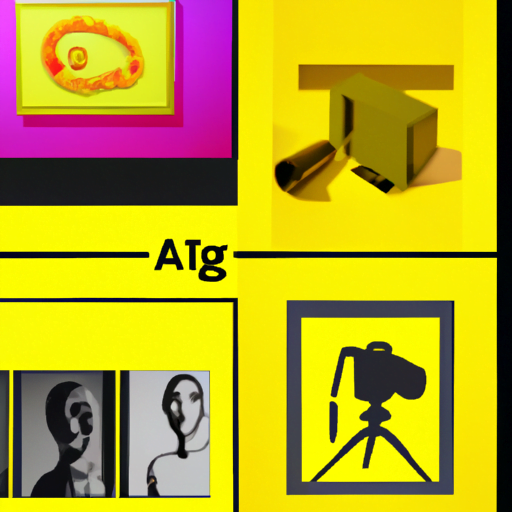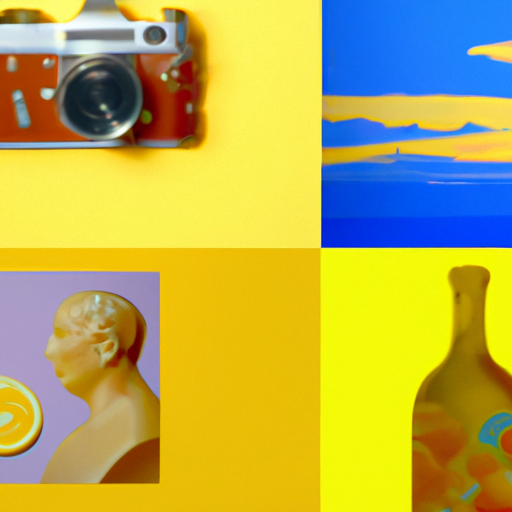
-
Table of Contents
The Art of Visual Allegory: Telling Stories through Symbolism

Introduction
Visual allegory is a powerful tool used by artists throughout history to convey complex ideas and narratives through symbolism. By using symbols and metaphors, artists can create a deeper connection with their audience and evoke emotions that go beyond the surface level. In this article, we will explore the art of visual allegory, its history, techniques, and the impact it has on storytelling.
The History of Visual Allegory
Visual allegory has been used in art for centuries, with its roots dating back to ancient civilizations. The Egyptians, for example, used hieroglyphics to tell stories and convey ideas through symbolic representations. Similarly, the Greeks and Romans used allegorical figures in their mythology to represent abstract concepts such as love, war, and wisdom.
During the Renaissance period, artists like Leonardo da Vinci and Michelangelo used visual allegory extensively in their works. Leonardo’s famous painting, “The Last Supper,” is a prime example of how symbolism can be used to convey a narrative. The positioning of the figures, the use of light and shadow, and the subtle gestures all contribute to the overall message of the painting.
Techniques of Visual Allegory
Visual allegory can be achieved through various techniques, including the use of symbols, colors, composition, and juxtaposition. Let’s explore each of these techniques in detail:
Symbols
Symbols are the building blocks of visual allegory. They can be objects, animals, or even gestures that represent abstract ideas or concepts. For example, a dove is often used as a symbol of peace, while a snake can represent deceit or temptation. By incorporating these symbols into their artwork, artists can communicate complex ideas in a concise and visually appealing manner.
One famous example of the use of symbols in visual allegory is the painting “The Birth of Venus” by Sandro Botticelli. In this painting, Venus, the goddess of love, is depicted standing on a seashell, symbolizing her birth from the sea. The use of the seashell as a symbol adds depth and meaning to the artwork, allowing the viewer to interpret the painting on multiple levels.
Colors
Colors play a crucial role in visual allegory as they can evoke specific emotions and convey meaning. Different colors have different associations and can be used to enhance the narrative of a piece. For example, warm colors like red and orange are often associated with passion and energy, while cool colors like blue and green can represent calmness and tranquility.
An excellent example of the use of colors in visual allegory is the painting “The Starry Night” by Vincent van Gogh. The vibrant blues and yellows used in the sky create a sense of movement and energy, while the dark blues and blacks in the foreground evoke a feeling of mystery and introspection. The colors in this painting contribute to the overall narrative of the artist’s emotional state and his connection with the natural world.
Composition
The composition of a piece is another essential aspect of visual allegory. The arrangement of elements within a frame can guide the viewer’s eye and convey meaning. Artists often use techniques such as symmetry, balance, and perspective to create a visually pleasing and meaningful composition.
One notable example of the use of composition in visual allegory is the painting “The Persistence of Memory” by Salvador Dalí. The melting clocks and distorted landscapes are arranged in a way that creates a dreamlike and surreal atmosphere. The composition of this painting adds to the overall narrative of the fleeting nature of time and the subconscious mind.
Juxtaposition
Juxtaposition is the technique of placing contrasting elements side by side to create a visual impact and convey a message. By juxtaposing different symbols or ideas, artists can create tension and provoke thought in the viewer.
An intriguing example of the use of juxtaposition in visual allegory is the artwork “Guernica” by Pablo Picasso. This painting depicts the horrors of war by juxtaposing images of suffering and destruction with symbols of hope and resilience. The stark contrast between these elements creates a powerful and thought-provoking narrative about the consequences of violence.
The Impact of Visual Allegory on Storytelling
Visual allegory has a profound impact on storytelling as it allows artists to communicate complex ideas and emotions in a concise and visually appealing manner. By using symbols and metaphors, artists can tap into the viewer’s subconscious and evoke a deeper emotional response.
One of the significant advantages of visual allegory is its universality. Symbols and metaphors can transcend language barriers and cultural differences, making them accessible to a wide range of audiences. This allows artists to tell stories that resonate with people from different backgrounds and experiences.
Visual allegory also encourages active engagement from the viewer. By presenting a narrative through symbols and metaphors, artists invite the audience to interpret and analyze the artwork, creating a more immersive and interactive experience. This engagement can lead to a deeper understanding and appreciation of the artist’s message.
Conclusion
Visual allegory is a powerful tool that artists have used throughout history to tell stories and convey complex ideas. By using symbols, colors, composition, and juxtaposition, artists can create visually appealing and emotionally impactful artworks. Visual allegory transcends language barriers and encourages active engagement from the viewer, making it a universal and effective storytelling technique.
Whether it’s the ancient Egyptians using hieroglyphics or modern artists using contemporary mediums, visual allegory continues to be a vital aspect of artistic expression. By understanding and appreciating the art of visual allegory, we can gain a deeper insight into the stories and messages conveyed by artists throughout history.
